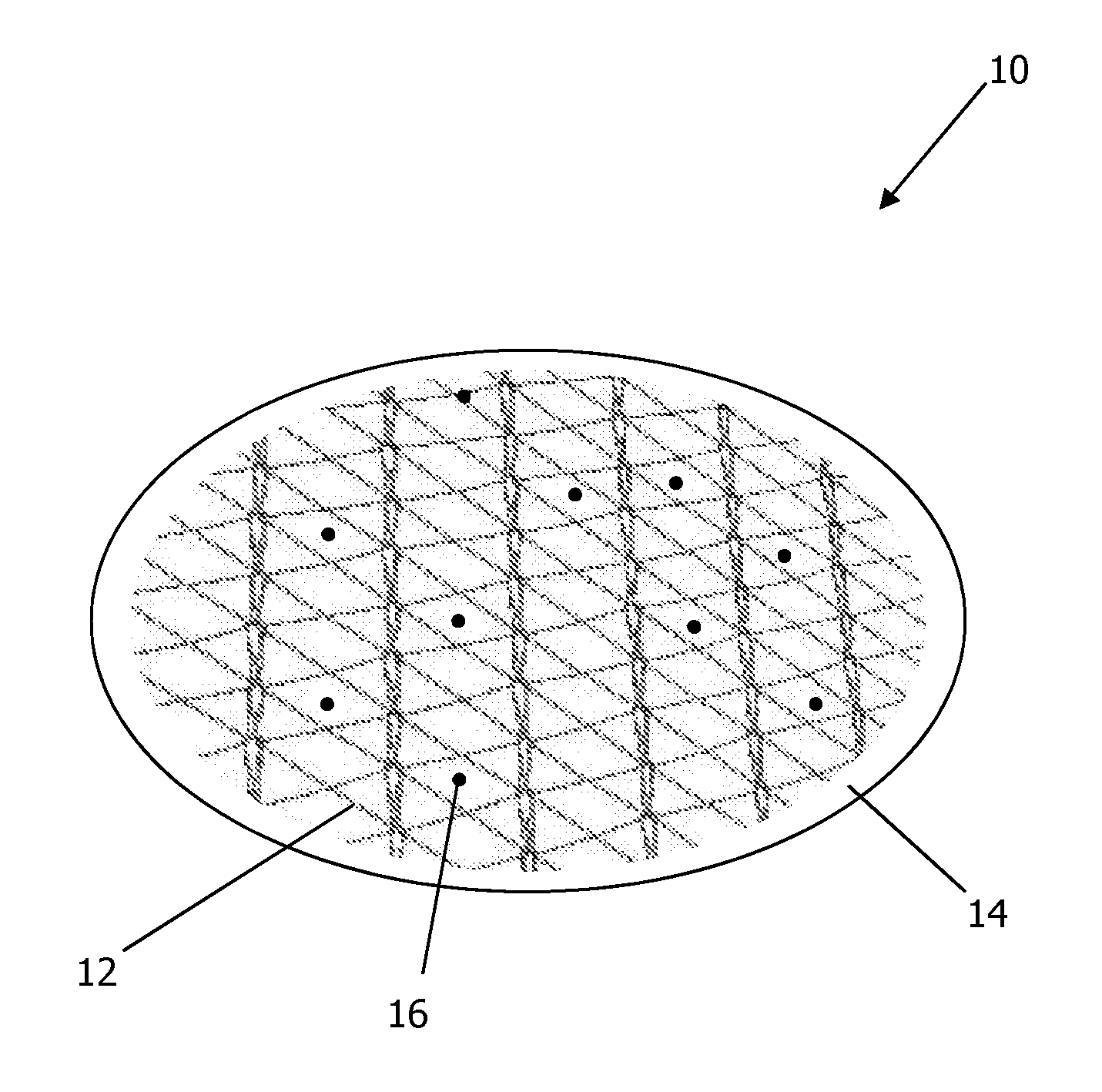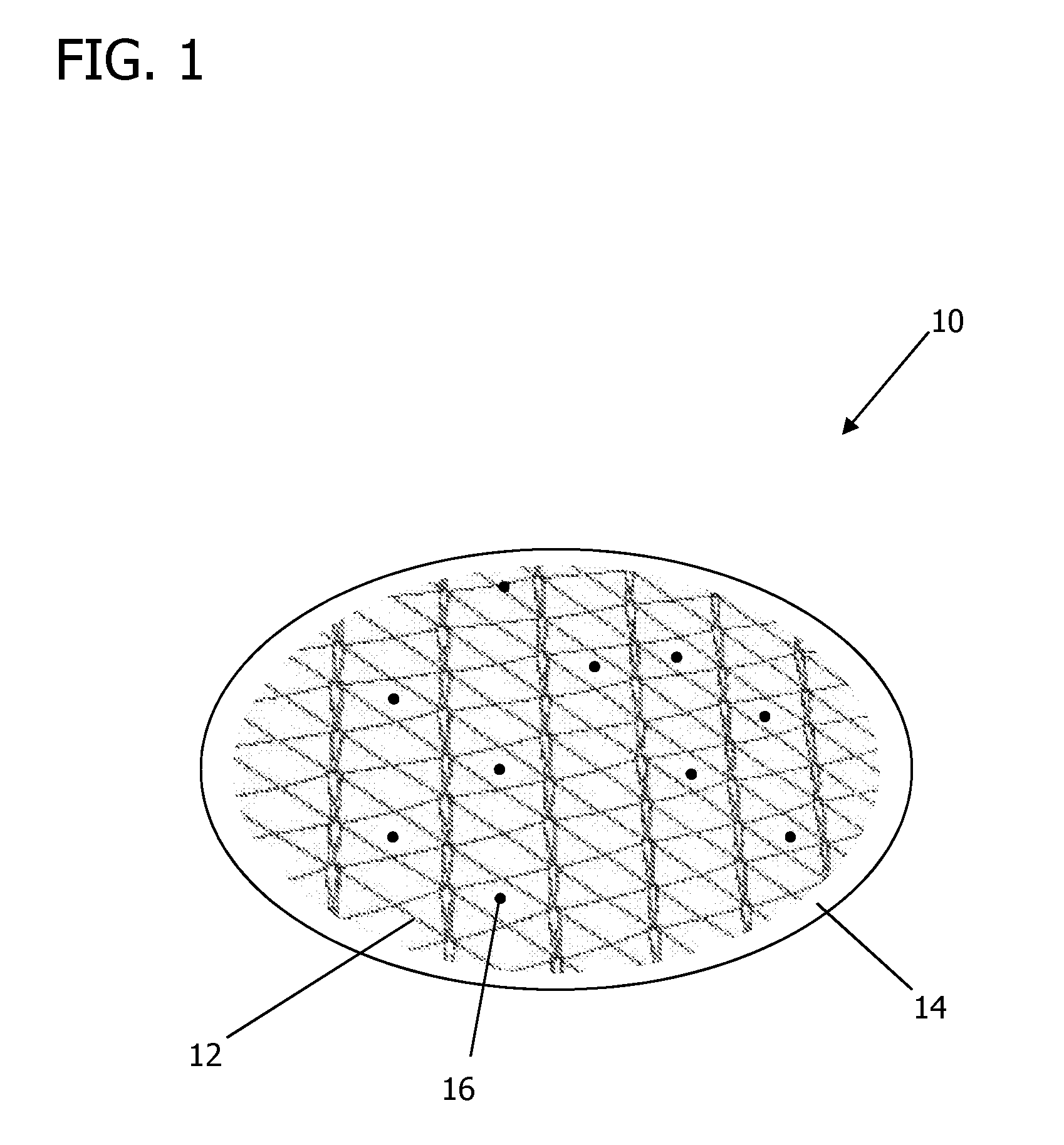Hyperthermia targeting compositions, devices, and methods for cancer therapy
a cancer and composition technology, applied in the field of hyperthermia targeting compositions, devices, and cancer therapy, can solve the problems of long time for synthesis, high polydispersity of pgs products, and limiting the commercial viability of pgs products
- Summary
- Abstract
- Description
- Claims
- Application Information
AI Technical Summary
Benefits of technology
Problems solved by technology
Method used
Image
Examples
example 1
[0115]A disc of a pure thermoset PGS and a gold mesh embedded in a thermoset PGS disc were each manufactured and were subjected to RF-frequency radiation by mounting on an acrylic support that was then exposed to microwave radiation at 600 W for 1 minute. It was surprisingly discovered that while the gold mesh composite exhibited higher temperatures over the pure PGS, even the pure PGS reached temperatures in excess of 300° F. (150° C.), significant enough to have melted the acrylic support to which it was attached, despite the acrylic support itself having stayed at no more than room temperature, and high enough to be useful in hyperthermia treatment therapies as contemplated herein.
[0116]Further testing and observation of the PGS post-heating showed that despite the large amount of absorbed RF energy (and the corresponding amount of heat it emitted), the PGS did not lose its characteristic elasticity.
example 2
[0117]To determine the difference in capability of microwave-heating between PGS and PGA, cast discs of identical volume of PGS and PGA were formed. PGS was cast by thermosetting RG-300 for 72 hours at 120° C. (248° F.) and 10 Torr (1300 Pa). This was done in a 4 1 / 16″ (103 mm) diameter aluminum pan. A 2⅞″ (73 mm) diameter aluminum pan was used to cut a 2⅞″ (73 mm) disc from the larger sample of PGS. PGA was cast by loading PGA pellets into a 2⅞″ (73 mm) diameter aluminum pan, placing the pan on a hot plate, tenting the pan with aluminum foil and heating / melting the PGA at about 250° C. (480° F.) for about 15 minutes. The pan, both prior to and during heating, was purged with nitrogen gas.
[0118]For each experiment, a disc was placed in an open-top microwave-invisible polypropylene (PP) container, which was placed on top of a second open-top microwave-invisible PP container that was inverted and placed on the microwave carousel. A microwave-invisible container was selected in order t...
example 3
[0122]Samples of sebacic acid, glycerol, water, and sodium chloride were formed by mixing the reactants using the PolyBlock under heat and mixing while blanketed with nitrogen gas. The following reaction mixtures were created:
[0123]Reactor 1: Water Mediated PGS—Sebacic Acid, Glycerol, and Water
[0124]Reactor 2: Non-Water Mediated PGS—Sebacic Acid and Glycerol
[0125]Reactor 3: Water Mediated PGS+Salt—Sebacic Acid, Glycerol, Water, and NaCl
[0126]Reactor 4: Non-Water Mediated PGS+Salt—Sebacic Acid, Glycerol, and NaCl
[0127]Each reactor was loaded with components at a typical PGS synthesis ratio (with 0.019 mol of NaCl for Reactor 3 and Reactor 4). A reflux assembly was used in each reactor using a condenser tube with −2° C. (28° F.) ethylene glycol-water flowing through the tube. Nitrogen gas was flowed through each reactor at about one liter per minute so as to prevent oxidation while still being a low enough flow to prevent vapors from escaping the reflux assembly. Components were heate...
PUM
| Property | Measurement | Unit |
|---|---|---|
| temperatures | aaaaa | aaaaa |
| temperature | aaaaa | aaaaa |
| body temperature | aaaaa | aaaaa |
Abstract
Description
Claims
Application Information
 Login to View More
Login to View More - R&D
- Intellectual Property
- Life Sciences
- Materials
- Tech Scout
- Unparalleled Data Quality
- Higher Quality Content
- 60% Fewer Hallucinations
Browse by: Latest US Patents, China's latest patents, Technical Efficacy Thesaurus, Application Domain, Technology Topic, Popular Technical Reports.
© 2025 PatSnap. All rights reserved.Legal|Privacy policy|Modern Slavery Act Transparency Statement|Sitemap|About US| Contact US: help@patsnap.com



